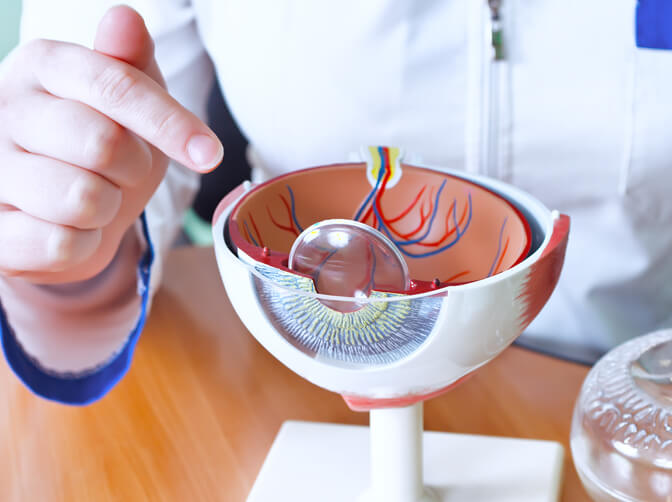Understanding Cataracts
A cataract is an opacity in the natural, normally clear, human crystalline lens. There are many different forms of cataracts: some are yellow, some are white and some are black; they affect vision in different ways.
The cause is usually age-related but certain conditions like diabetes mellitus and a previous eye injury can lead to accelerated cataract formation. A cataract in only one eye in a relatively young patient is often due to a forgotten eye injury.

Depending on the location and density of the cataract, it can cause different symptoms. The most common symptom of a cataract is gradual, painless, progressive blurring of vision in one or both eyes. Other symptoms include glare and starburst especially noticeable at night. When glasses cannot correct blurred vision, it suggests something is wrong with the eye and one of the most likely causes is age-related cataract.
We will all develop cataracts as we age but it is more common above the age of 60. This is due to the age-related changes that occur in the normally clear and transparent human crystalline lens. In the early stages, a change in spectacle prescription may be sufficient to restore vision. However, if the drop in vision is affecting your work or lifestyle, cataract surgery is recommended. There is no medication or diet proven to reverse or retard cataract formation.
Contact us for a detailed assessment and let us help you restore your vision.

